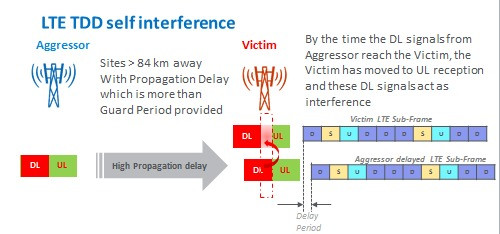Hi All,
In NR, we see that TDD UL DL config in SIB1 can be altogether omitted and network can dynamically schedule DL/UL slots.
So what would be the advantage of even having it in the first place?
As far as I know, TDD DL/UL configuration broadcasted in SIB1 is applicable for all the UEs in he cell. And dynamic configuration by means of RRC signalling or through DCI is only applicable for F slots declared by SIB.
So SIB will fix righmost and leftmost DL/UL slots -> Remaining F can be dynamically configured by RRC Reconf -> Still remaining can be used by DCI.
I get this one.
But when we omit the whole TDD-ul-dl config, there’s nothing like dl/ul or flex.
Almost all slots network can use anyhow.
So then the point being, how does pre-defining a slot as DL/UL help?
We don’t omit whole TDD TDD-ul-dl config.
RRC reconfiguration cannot change DL/UL slots declared by SIB. DCI cannot change DL/UL slots/symbols fixed by SIB and RRC Reconf.
You can omit the whole TDD UL-DL config in SIB1, it is optional IE.
SIB is not specifying any explicit DL/UL structure, then obviously RRC Recong can configure the way it wants.
I am saying when SIB has said something, then RRC reconf cannot overwrite it.
My opinion was when SIB is present, if it is absent then there no common rule.
An advantage of dynamic slot format is, scheduler can dynamimically adjust DL/UL capacity based on requirement.
And mostly, no operator use full dynamic slot format, mostly it is semi static.
I heard most operators omit this TDD ul-dl config in SIB1, and that makes sense for me.
I am thinking about the case that why would anyone want to put it pre-defined.
Yes, and I don’t see any advanatge of a fixed one. So why not use dynamic always!
With fully dynamic scheme, it is very difficult to co-ordinate DL/UL structure between UEs of own network or UEs of another network.
For India where, 3.5G spectrum will be shared amongs multiple operators, it is necessary to have minimum common DL/UL structure. Other wise there will be TDD self interference cause due to own , and/or due to cells of another operator.
Same was true for LTE also. All operators in india are bound to use DSUDD DSUDD structure.
Dynamics of TDD is only for sake of saying, no one will be allowed to use complete dynamic TDD structure.
TDD self interference if slots are not defined for DL/UL?
Ok, I am not aware of the concept, thanks. I’ll read further on it.
Assume 1 cell is using sub frame 5 for DL and same sub frame is use by cell 2 of other operator for UL? Won’t it affect interference?
I would imagine if they lie so close in frequency that they can introduce interference, it would even be there be both are DL slots.
Yes right. DL/DL or UL/UL intereference won’t impact much.
Yes, so this interference doesn’t seem to be the reason to pre-define slot structure.
So any slot structure we define can have interference.
No it is only the reason.
I am saying we cannot have different DL /UL structure between the operators.
Ok. I have understanding on interference so I am not getting why DL/UL slot of different UEs introduce BLER if they have enough separation.
Do you have any reference for the same?
I haven’t read on this topic well enough I guess.
This is example of TDD self interference of LTE even when DL/UL structure is aligned.
If it is not alligned, then surely there will be intereference.

I understand this a lit differently.
I see this as an issue with UL/DL alignment of a UE and don’t see this being introduced due to presence of another UE UL/DL structure.
But let me read on this more and get back later.
How can there be DL/UL misalignment of same UE?
In LTE, DL/UL misalignment is only possible at cell level.
In NR, it can be at UE level because we can have UE level DL/UL structure.
Above example is not DL/UL misalignment in configuration. Misalignment is caused because of propagation delay. If you do misaligned configuration, then even without propagation delay Dl of 1 cell will overlap with UL of other cell and there will be huge intereference. Same is true for NR also.
Please check below paper of GSMA for reference:
Why only DSUDD type frame structure in India?
Because it is based on common agreement of all indian operators.
Please see GSMA paper I shared above for reference.